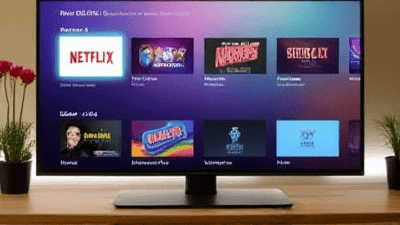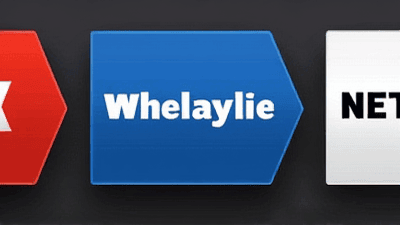
Unmasking the True Price: Beyond Subscription Fees of Your Streaming Entertainment
Streaming services have profoundly redefined entertainment consumption, seemingly offering endless content for a simple monthly fee. This prevalent phenomenon, however, often masks a complex web of financial implications that extend far beyond the advertised subscription cost. What appears to be a straightforward transaction for digital content hides numerous subtle charges and value exchanges that consumers frequently overlook, leading to an illusion of affordability.
The meteoric rise of platforms like Netflix, Disney+, and HBO Max has made on-demand entertainment a ubiquitous part of modern life, offering unparalleled convenience and choice. Yet, this convenience comes with multifaceted impacts on household budgets, data infrastructure, and even personal privacy. As the market becomes increasingly fragmented with new entrants and exclusive content, understanding the true financial footprint of streaming becomes paramount for both individual consumers and the broader digital economy. Current developments see providers experimenting with ad-supported tiers and aggressive bundling strategies, further complicating the value proposition. What impact would it have on our understanding or practice of digital entertainment if we failed to fully comprehend these often-unseen costs?
The Illusion of Fixed Pricing

Beyond the Monthly Bill: Data Overages and Hardware Requirements
The advertised monthly subscription fee for a streaming service often presents an incomplete picture of the actual cost incurred by the consumer. One significant hidden cost stems from data usage. High-definition and particularly 4K streaming demand substantial bandwidth, consuming gigabytes of data per hour. For users with internet service provider (ISP) data caps, exceeding these limits can trigger costly overage charges, transforming an otherwise "affordable" monthly entertainment budget into an unexpectedly expensive endeavor. For instance, streaming a 4K movie can consume approximately 7 gigabytes per hour, easily pushing moderate internet plans past their limits. This dynamic is much like buying a car and forgetting about the recurring fuel and maintenance expenses; the vehicle itself is only part of the equation.
Another overlooked expense is the hardware requirement. To enjoy streaming content, consumers need compatible devices, which might include smart TVs, streaming sticks (like Roku or Amazon Fire TV), gaming consoles, or updated home Wi-Fi routers. These devices often require an initial investment or periodic upgrades to support newer codecs, higher resolutions, or improved performance. Older equipment might not be capable of delivering the optimal streaming experience, subtly pressuring users into purchasing new tech. The pursuit of seamless, high-quality viewing thus necessitates an ongoing investment in an ecosystem of supporting technology, which is rarely factored into the perceived cost of a streaming subscription.
The Bundling Trap and Content Silos
Navigating Multiple Subscriptions and Fragmented Content
The initial appeal of streaming services was often their all-encompassing libraries for a single fee. However, the landscape has evolved into a "subscription fatigue" scenario, where consumers must subscribe to multiple platforms to access their desired content. This phenomenon represents a significant hidden cost: the rapid accumulation of multiple subscriptions. What began as one or two primary services can quickly balloon to five, six, or even more, as media companies reclaim content for their proprietary platforms and launch niche offerings. Each additional monthly charge, though seemingly small individually, compounds into a substantial aggregate expense that far exceeds the budget initially allocated for streaming.
This fragmentation is further exacerbated by content silos and re-subscriptions. Popular shows and movies frequently migrate between services as licensing agreements expire, forcing viewers to subscribe to a new platform or re-subscribe to a previously cancelled one just to follow specific titles. This creates a perpetual cycle of chasing content, where consumers must continuously adjust their subscriptions, often leading to a higher baseline monthly expenditure than intended. Introductory promotional offers also play a role, enticing users with lower prices that eventually expire, reverting to higher standard rates and increasing the financial burden without a perceived increase in value.
The following table illustrates how cumulative costs can quickly escalate when subscribing to multiple services to cover diverse content needs:
| Service | Individual Price/Month | Content Niche |
|---|---|---|
| StreamFlix | $15.99 | Blockbusters, Dramas |
| CinePrime | $14.99 | Indies, Originals |
| SportsLive | $29.99 | Live Sports, Documentaries |
| Cumulative | $60.97 | Diverse Needs Met |
This table illustrates how quickly individual subscription costs accumulate. While promotional bundles might offer slight initial discounts, the long-term trend often sees consumers paying significantly more than they realize just to access a diverse range of content across various platforms. The fragmentation of content means that a single service rarely provides everything a user desires, necessitating a multi-subscription strategy that financially burdens the consumer.
Advertising, Privacy, and Value Erosion

The Unseen Price of Your "Free" or Ad-Supported Tier
Even as consumers pay for streaming services, they encounter further hidden costs through advertising, data privacy implications, and a general erosion of perceived value. Many services now offer cheaper, ad-supported tiers, presenting a lower monetary cost but exacting a price in terms of viewer time and attention. These interruptions, which can consume several minutes per hour of viewing, degrade the seamless experience that was once a hallmark of premium streaming. Even "ad-free" premium tiers are not entirely immune, often incorporating self-promotional content or sponsored segments, blurring the lines of what "ad-free" truly means.
Beyond direct advertising, streaming services engage in extensive data collection, posing significant privacy implications. Companies gather vast amounts of user data, including viewing habits, search queries, device types, and demographic information. While this data is often used to personalize recommendations and improve user experience, it also serves as a valuable asset for targeted advertising and market research. This exchange of personal data for service access, though not a direct monetary transaction, represents an unseen cost where consumer privacy is the currency.
Finally, there is an overarching value erosion. As prices for streaming services increase, and content libraries become more volatile due to licensing changes, consumers might find themselves paying more for a service that delivers less perceived value. The influx of ads into formerly ad-free environments further diminishes the premium experience, leading to a sense of dissatisfaction and questioning the true worth of their monthly payment.
Conclusion
The allure of streaming services lies in their promise of unlimited entertainment for a fixed monthly fee, yet this perception belies a complex reality of hidden costs. We have explored how expenses extend far beyond the basic subscription, encompassing data overage charges, the necessity for compatible hardware investments, and the cumulative burden of multiple subscriptions driven by content fragmentation. Additionally, the proliferation of ad-supported tiers and the pervasive collection of personal data represent non-monetary costs in the form of compromised viewing experience and privacy exchange. Understanding these intricate financial layers is crucial for consumers to make informed choices in the ever-evolving digital entertainment landscape. What once seemed a simple shift from physical media has transformed into a sophisticated ecosystem with unforeseen economic implications, highlighting the imperative for greater transparency.
Looking ahead, the streaming industry faces several potential trajectories and challenges. We may witness further market consolidation, with major players acquiring smaller competitors, or conversely, increased niche fragmentation catering to highly specific audiences. Technological iterations, such as advancements in AI-driven personalization, could lead to even more tailored content recommendations, potentially nudging users towards additional subscriptions. Macro scientific policies concerning data privacy, such as GDPR and CCPA, will continue to shape how services collect and utilize user information, potentially influencing business models. Consumers are advised to regularly audit their subscriptions, meticulously monitor data usage, and critically assess the true value proposition of each service. Continuous research into the terms of service, privacy policies, and evolving business strategies remains paramount for navigating this dynamic and financially complex digital frontier.
Frequently Asked Questions (FAQ)

Q: How can I accurately track and manage my total streaming expenses, including hidden costs? A: Effectively managing your total streaming expenses requires a multi-faceted approach that goes beyond simply tallying subscription fees. Start by conducting a thorough subscription audit; review your bank statements and credit card bills monthly to identify all recurring charges related to streaming services. Many modern financial tracking apps, like Mint or YNAB (You Need A Budget), can help categorize these expenses, providing a clearer overview. Next, focus on data usage monitoring. Check your internet service provider's (ISP) website or app for your monthly data consumption, especially if you have data caps. Understanding how much data your household uses, and knowing that high-definition streaming consumes significantly more (e.g., 4K streaming can use approximately 7 GB per hour, while HD uses around 3 GB per hour), can help you anticipate potential overage charges. Adjusting streaming quality settings in your service preferences can conserve data. Additionally, consider the hardware depreciation and upgrade cycle. Factor in the eventual need to replace or upgrade streaming devices, smart TVs, or even Wi-Fi routers, as these are indirect but essential costs for accessing content. A proactive strategy is "subscription cycling": signing up for a service, binge-watching desired content, and then canceling before the next billing cycle, moving to another service. This requires active management but can significantly reduce cumulative costs. Finally, always be aware of promotional offers' expiry dates; they often revert to higher baseline costs that you need to factor into your long-term budget.
Q: What are the implications of my data being collected by streaming services, and how can I protect my privacy? A: The collection of your data by streaming services carries significant implications, extending beyond mere convenience. Streaming providers gather extensive information, including your viewing history, search queries, device types, geographical location, and potentially demographic data from linked accounts. This data is primarily used to power personalized recommendations, keeping you engaged with relevant content, and to facilitate targeted advertising, which is a crucial revenue stream for many services, even premium ones. In some cases, anonymized or aggregated data might also be shared or sold to third parties for market research. The core implication is that your digital viewing habits create a detailed profile of your preferences and behaviors, which essentially becomes a valuable asset for the service provider, impacting your online experience and potentially influencing what content you see and what ads are served to you. Think of your viewing habits as a form of currency; you're often paying with more than just money.
To protect your privacy, start by reading the privacy policies of the services you use, however tedious this may seem. They outline exactly what data is collected and how it's utilized. Next, actively adjust privacy settings within each service's account preferences; many now offer dashboards where you can limit data sharing for ad personalization or opt out of certain tracking. Always use strong, unique passwords and enable two-factor authentication (2FA) to prevent unauthorized access to your account and the data within it. Be cautious when using social media accounts to log into streaming services, as this can link more of your personal data. While Virtual Private Networks (VPNs) can mask your IP address, they primarily help with geo-unblocking and generally won't prevent the streaming service itself from collecting your viewing habits once you're logged into your account. The most effective protection comes from informed choices and actively managing your digital footprint.








